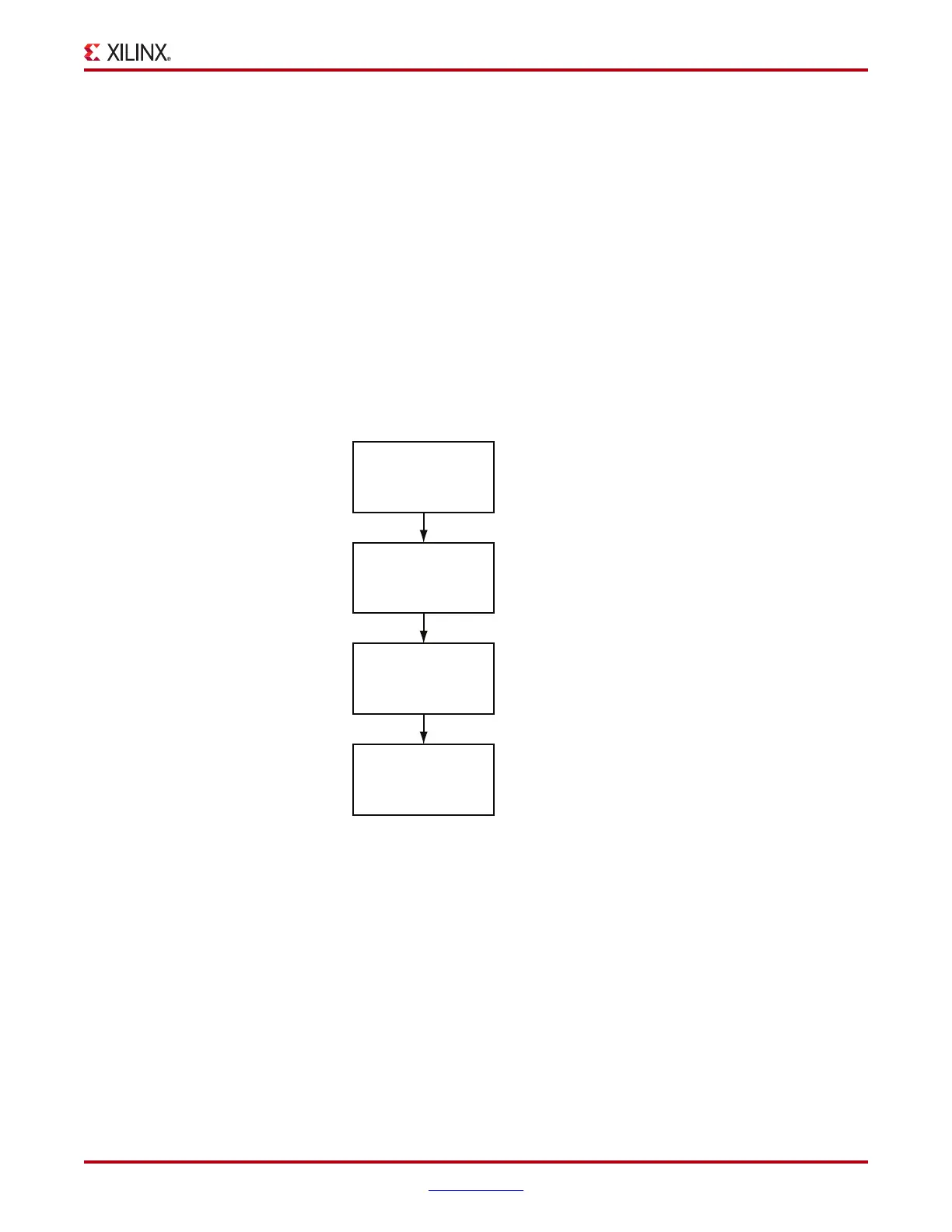Virtex-6 FPGA GTX Transceivers User Guide www.xilinx.com 251
UG366 (v2.5) January 17, 2011
RX Channel Bonding
Connecting Channel Bonding Ports
The channel bonding operation requires connecting the master GTX RXCHBONDO port to
the RXCHBONDI port of all slaves in the group. A direct connection is required for
adjacent GTX transceivers. To directly connect a master to a slave:
1. Connect the RXCHBONDO port of the master to the RXCHBONDI port of the slave.
2. Tie the RXCHBONDMASTER of the master transceiver High.
3. Tie the RXCHBONDSLAVE of each slave transceiver High.
When GTX transceivers are directly connected, meeting the timing constraints becomes
difficult as the transceivers get further apart. The solution to this problem is to connect the
transceivers in a daisy chain. Daisy chaining is performed using the
RXCHBONDLEVEL[2:0] ports to allow additional pipeline stages between the master and
the slave. The RXCHBONDO port of each slave is used as a pipeline stage in the
RXCHBONDO path from the master. Figure 4-39 and Figure 4-40 show two daisy-chain
examples.
X-Ref Target - Figure 4-39
Figure 4-39: Channel Bonding Daisy Chain Example 1
RXCHBONDI
RXCHBONDO
RXCHBONDI
RXCHBONDO
RXCHBONDI
RXCHBONDO
RXCHBONDI
RXCHBONDO
RXCHANBONDMASTER = 1
RXCHANBONDLEVEL[2:0] = 3
RXCHANBONDSLAVE = 1
RXCHANBONDLEVEL[2:0] = 2
RXCHANBONDSLAVE = 1
RXCHANBONDLEVEL[2:0] = 1
RXCHANBONDSLAVE = 1
RXCHANBONDLEVEL[2:0] = 0
UG366_c4_36_051509

